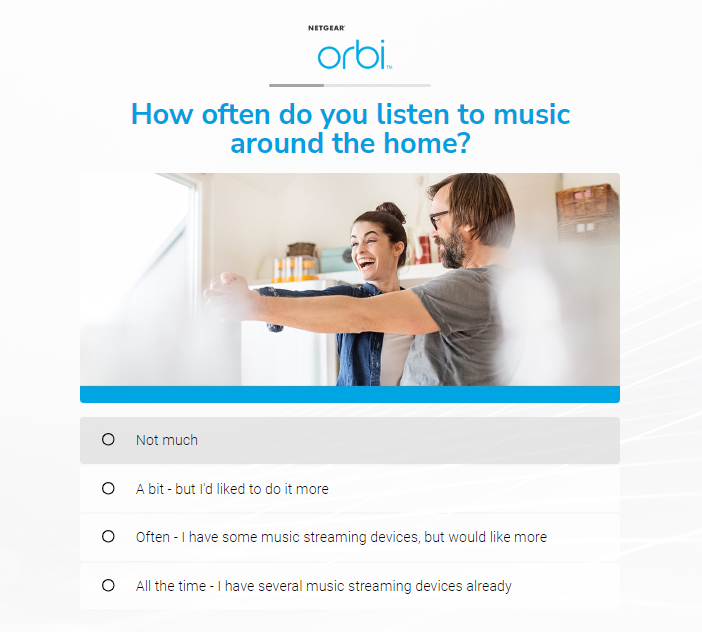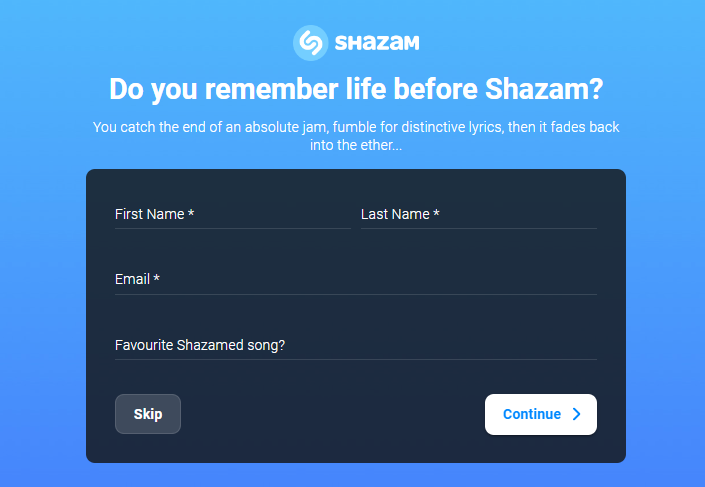How gamification in your retail media ads maximises your ROI
Resources
The first retail media network – which we can define as a platform put in place by a retailer to sell D2C advertising to brands close to the point of sale – came courtesy of Amazon back in 2012. However, you may not have heard the term until recently, as they’ve been spawning left, right, and centre over the past few years.
With the hunt for every possible revenue stream, mature retailers with the infrastructures and the reach to make it work have recognised the digital shelf space they’ve been sitting on; and with the decline of third-party cookies and dwindling audiences on legacy media platforms like TV and radio, marketers are recognising that retail media advertising puts them in-front of highly targeted audience segments who are already actively shopping and as such, more receptive to branded messaging.
In this article we’ll explore what retail media is, why it’s becoming so popular, and talk about how gamification can be integrated into your retail media strategy to:
- Help your ads stand out as retail media spaces become more saturated
- Make your branded messaging more effective
- Use gamified retail media to collect your own first-party data
- Or, if you’re not an advertiser, but a network, use gamification to make your retail media network more attractive to advertisers
Understanding retail media
So what exactly is it? What defines retail media?
Think about this: whenever you jump onto Amazon and search for such-and-such a product, the first few items will be sponsored products. They’re retail media ads. You jump onto Deliveroo and see paid placements under the “Featured” section. They’re retail media ads, too. Same with Ebay, same with Target, same with Sainsbury’s. Retail media ads are everywhere on the bigger ecommerce platforms close to the point of sale.
Typically, the ads are bought by brands who sell products through that retailer and are looking to drive brand awareness and increase sales, but this isn’t a hard and fast rule. Retail media is also bought by other advertisers, sometimes referred to as “non-seller brands,” looking to reach a very specific type of audience through the rich first-party data that large, mature retailers acquire.
For example, marketers for car insurance firms might buy ads where the likes of Amazon and Target are selling car maintenance products. Ads for services like life insurance could similarly target customers shopping for nappies, or buying other items indicative of a growing family.
The 3 types of retail media
Retail media can be categorised, admittedly broadly, into 3 distinct types.
- Onsite: This is within a retailer’s own digital network, such as on their ecommerce websites, apps, and even emails.
- In-store: Retail media can even extend to physical premises. For example, a performance shoe company renting a wall and an installation in a specialist running retailer; or a perfume brand renting a space in a department store to install a touchscreen where by answering a series of questions, shoppers are recommended a perfume based on their preferences.
- Offsite: This is based on the retailer’s customer data, and placed strategically on third-party channels like social media, TV, and other relevant websites.
Fundamentally, retail media advertising is effective because it’s incredibly close to the point of purchase, and/ or it’s utilising the rich first-party data retailers are able to acquire to be hyper-targeted.
Traditional advertising typically bookends or breaks up activities target users are doing. They could be hit by a more traditional advert when they’re eating dinner, watching a movie, or just travelling from A to B.
If you think about it like a game of football, the player (or customer) is getting the ball (advert) at the halfway line, or in their own penalty box, or even when they’re sitting on the bench. Retail media advertising moves the players closer to the goalposts (or point of sale), and delivers the ball with a clear shot at the back of the net, making goals a lot easier to score (or sales a lot easier to convert).
Gamification: a game changer in the changing game of marketing

Gamification is the application of gaming elements to typically non-gaming contexts for improved engagement. It’s been proven to be a highly effective digital technique across all areas of marketing, from acquisition and activation, to retention, referral, and revenue.
Its effectiveness lies in being able to appeal to the human mind’s innate desire to play, while pulling on different psychological levers to encourage desired actions. It’s something that’s only become more sophisticated, nuanced, and effective as web technology has advanced.
The numerous case studies you can find of interactive challenges and gamified giveaways being used to create brand awareness, foster customer loyalty, and increase conversions are all primed to be built upon and developed in retail media advertising.
Making the difference to your retail media advertisements
As mentioned, a big pull to retail media is the combination of the collapse of third-party cookies alongside shrinking audiences for advertising on more traditional media. Retail media can leverage targeted advertising based on first-party data, will typically boast a large audience (depending on the specific retail media network), and can put advertisements incredibly close to the point of sale.
However, advertisers will be limited in their insights, regardless of who they’re advertising with, as retail media networks will be bound by data protection laws and only be able to share so much with their clients.
The popularity of retail media creates the same challenge present when trying to effectively market on social media: there’s a lot of noise. When everything is an advert, how receptive can the average consumer be? A human being only has so much bandwidth to be receptive to brands trying to convert them into a customer.
These blockers are where gamification comes to the rescue. In short, integrating gamification into your retail media ads means:
- You can stand out from your competitors: An invitation to play cuts through the umpteenth: “Buy this!” or the 22nd: “The best that!” type of message.
- Your messaging is more effective: Marketing games are dynamic – they can invite audiences to participate with a brand and to make a connection. When well executed, they’re the digital equivalent of putting a product in a customer’s hand. Traditional ads, by contrast, are passive, and easier to dismiss.
- You can use them to effectively gather your own first-party data and customer insights: Any game you customise on the Drimify gamification platform gives you the option to include intermediate screens, which could be made up of additional branded content, but could include data collection forms, where you can gather participants’ personal info as well as demographic info (what products they’re interested in, how often they upgrade, etc.).
Putting gamification into practice in retail media
Let’s run through a few of the ways gamification can be integrated into retail media to serve your business, both for brands looking to advertise in retail media, and retail media networks.
1. Help customers find the right product

If your business is consumer packaged goods, like food, or everyday items that are replaced routinely, this is less of a goal – people know what eggs taste like and people know exactly what batteries they need because devices will list them. A retail media ad simply needs to move your listing to the top of the marketplace. Durable goods, on the other hand, like shoes, coats, watches, vehicles, etc., are replaced far less often, and are far bigger decisions for consumers.
Let’s say you sell a range of coffee machines, and let’s say you also have a shop on Amazon, and you utilise retail media ads on amazon so your items are listed high up when people search: “Coffee machine.” More sales through this are great.
However, a significant amount of business inefficiency will come about from people returning items that aren’t exactly what they were expecting, or purchases they hadn’t researched properly. By integrating a link to a customised Product Recommendation Quiz that guides users to the best coffee machine for them from your range, and then directs them to the point of sale, you’re getting enormous return on investment (ROI) from your advertising.
You simply populate the Product Recommendation Quiz game engine with your content and graphics, creating your products, then your questions, and assigning each answer to a different product. You’re essentially creating a digital salesperson that lives in your ad, ready to spring to life and help you convert 24/ 7.
2. Drive brand awareness
Let’s say your brand is new and daring, and trying to disrupt an industry. Let’s take an example like Tony’s Chocolonely, whose mission is to produce and sell 100% slave-free chocolate, or the German Running Shoe brand, True Motion, whose heavily scientific approach to running shoes bucks the long-adhered to conventions of the running shoe industry.
Daring to challenge the status-quo can be great for differentiation, but being the new kid on the block means you’re there with no trust, so you need to make your point, and you need to make your point effectively. This is where an engaging experience like a Quiz can carry a lot of weight.
Instead of your ad just appearing on Amazon, or in a store setting, and potential customers saying, “I see you’re making a tyre, but I’ll stick with Michelin or Vittoria who I already trust, thanks,” they click on your add, and play through a Quiz made up of text, video, and images the explains the WHY behind your brand.
Gamification can be an effective way of explaining why you’ve made your product, and why they should adopt it. Then after they’ve been through that process, and you’ve potentially got through to them, you can redirect them back to the point of sale, where they’re now even more likely to make a purchase.
3. Build a community and drive conversion
You could consider using something like Drimify’s Combo™ to guide users to a branded game like a Pacman to initially engage them, include a leaderboard to stoke competition, and take them to an intermediate screen with a branded video that explains the WHY behind your product, service, or brand. Then they’re delivered straight to a Spin the Wheel, where they’re distributed a promotional code to incentivise them to convert.
The leaderboard for the Pacman game could be displayed on a dedicated page on your website, so people can see where they’ve fared – you could even enter the top 10 of your leaderboard, entitling them to a place in the prize draw at the end of your campaign.
Pro tip: Remember, a major advantage of advertising on retail media is advertising so close to the point of sale, so it might not always be prudent to include more elaborate gamification examples like this one. It depends on your objectives and if you’re a seller or non-seller brand.
4. Collect your own first party data and build your own user insights

As discussed, a big motivator for so many brands turning to retail media advertising is the collapse of third-party cookies, but this is limited in terms of the insights marketers and advertisers can actually get their hands on.
Gamified advertising in retail media, however, isn’t passive, it’s active, and is 2-way. It’s not just making impressions, it’s drawing action and collecting data.
For any of the previous examples of how you can use gamification in retail media marketing, your Drimify apps allow you to include data collection forms, where you can gather demographic data. You can also create Surveys to embed on their own ads, or include in Combos™, to gather further insights and ask more in-depth questions of your audience.
For ad networks facilitating retail media
Marketers looking to integrate gamification into their retail media campaigns is a great way for them to stand out against their competition, but what if you’re in the retail media network business itself?
Whether you’ve been able to build your retail media network in-house (like Amazon), or are one the growing range of ad-tech companies and consultancies that have gravitated to serving and facilitating within this sector, such as Criteo and CitrusAd, constantly trying to maintain the biggest possible slice of the retail media market will require innovative measures.
It’s already a huge industry, contested by big hitters, and will only grow and become more competitive. Having an intuitive gamification platform like Drimify integrated into your offerings opens up all sorts of new possibilities. This could be as simple as having optional pre-configured integrations of the Product Recommendation Quiz or the Spin the Wheel in your sponsored products and banner packages, all through Drimify’s white labelling option to keep the branding inhouse, or optimising your whole approach to be versatile to evolving gamification trends,
However you adapt to incorporate gamification options, implementing it through Drimify allows you to collect data on the effectiveness of your gamified advertising to consistently optimise your formats, utilise these insights into your ad sales pitch, and ultimately deliver more advertiser value on a large scale to your clients – increasing your profits and your slice of the retail media pie.
Get ahead of the competition
Retail media is only going to grow and become more sophisticated, so early adoption of innovative techniques, and finding original ways to integrate it, can help you and your business gain the most ROI out of your efforts, whether you’re an advertiser, or running a retail media network.
Gamification – a proven level-up in all forms of marketing and advertising – is an effective and versatile way to create more ambitious and effective retail media campaigns.
Want to know more?





